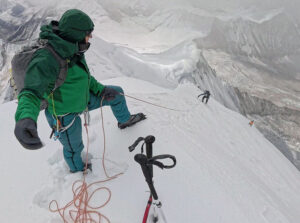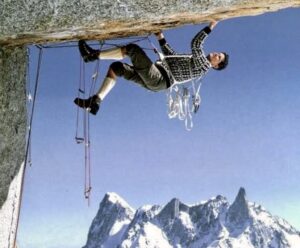Returning home with the same speed and efficiency that he climbed all 14 8,000’ers, Nirmal Purja is back in Kathmandu. The triumphant Nepali and teammates Mingma David Sherpa, Galjen Sherpa and Gesman Tamang were greeted by members of Seven Summit Treks this afternoon. Purja will enjoy just a few days of downtime before jetting off to guide on Ama Dablam.
Well-known climbers have heaped praise on Purja, and the world press has raved about him “smashing'” records and “conquering” mountains. Meanwhile, the adventure community begins the process of contextualizing his achievement and scrutinizing his claims. Some will see this as an unnecessarily negative exercise, in light of what has been an extraordinary display of mental, physical and logistical prowess.
But as with Colin O’Brady in Antarctica last year, beyond the mainstream media — so critical and discerning in politics, so superficial in anything to do with the outdoors — there is already debate about Project Possible. This comes with the territory of any self-governing community such as mountaineering, a community that holds style and originality dear.
Precisely where did Purja and company define their summits on Manaslu and Dhaulagiri? Is the rampant use of helicopters between Base Camps ethical? Does his reliance on supplementary oxygen diminish the achievement? Can we fairly compare what Purja did with the seven-plus years taken by Kim Chang-Ho and Jerzy Kukuczka, who were, after all, not climbing on the clock? These are the elephants in the room.
Indeed, Krzysztof Wielicki, the great Polish mountaineer and the fifth man to climb all the 8,000’ers, has already said of Purja’s effort, “It’s a performance and organizational feat, but without much importance.”
Wielicki’s gifted compatriot, Piotr Pustelnik, the 20th man to climb the 8,000’ers, adds, “Physically and conditionally the guy is a giant, but I have no pious attitude towards this feat.”
Leszek Cichy, who made the first winter ascent of Everest with Wielicki, fears that exploits such as Purja’s may lead to a decline of Himalayan alpinism. Climbs with real value, he states, should be “new, difficult roads, for example on 6,000’ers, overcoming new walls, exploration of virgin mountain regions, ascent of unconquered, though lower peaks, alpine style, lonely passages, winter.”
Collectively, the Polish trio have defined Purja’s feat as “record-breaking, but not historical. From the point of view of alpinism, he is light years behind Kukuczka, Messner, Loretan.”
These uncomfortable discussions can’t dismiss Purja’s extraordinary achievement, but they give it context within the specialized world of alpine climbing, in which a talented outsider has crashed the party.

Purja, Mingma David Sherpa and the Seven Summit Treks team.






